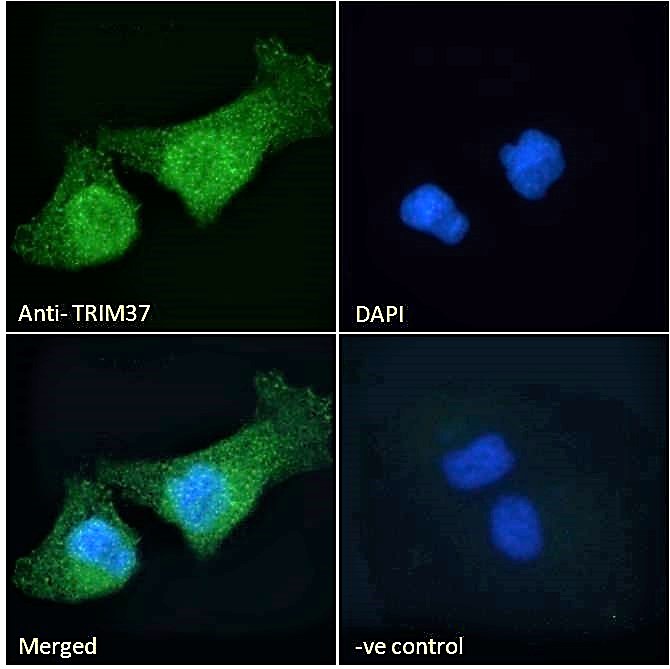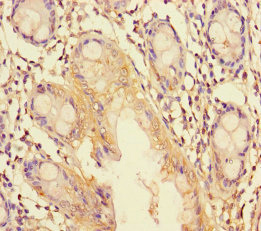anti-TRIM37 antibody
ARG63496
ApplicationsFlow Cytometry, ImmunoFluorescence, ImmunoCytoChemistry
Product group Antibodies
ReactivityBovine, Canine, Human
TargetTRIM37
Overview
- SupplierArigo Biolaboratories
- Product Nameanti-TRIM37 antibody
- Delivery Days Customer23
- ApplicationsFlow Cytometry, ImmunoFluorescence, ImmunoCytoChemistry
- CertificationResearch Use Only
- ClonalityPolyclonal
- Concentration0.5 mg/ml
- ConjugateUnconjugated
- Gene ID4591
- Target nameTRIM37
- Target descriptiontripartite motif containing 37
- Target synonymsMUL, POB1, TEF3, E3 ubiquitin-protein ligase TRIM37, RING-B-box-coiled-coil protein, RING-type E3 ubiquitin transferase TRIM37, mulibrey nanism protein
- HostGoat
- IsotypeIgG
- Scientific DescriptionThis gene encodes a member of the tripartite motif (TRIM) family, whose members are involved in diverse cellular functions such as developmental patterning and oncogenesis. The TRIM motif includes zinc-binding domains, a RING finger region, a B-box motif and a coiled-coil domain. The RING finger and B-box domains chelate zinc and might be involved in protein-protein and/or protein-nucleic acid interactions. The gene mutations are associated with mulibrey (muscle-liver-brain-eye) nanism, an autosomal recessive disorder that involves several tissues of mesodermal origin. [provided by RefSeq, Mar 2016]
- ReactivityBovine, Canine, Human
- Storage Instruction-20°C
- UNSPSC12352203





